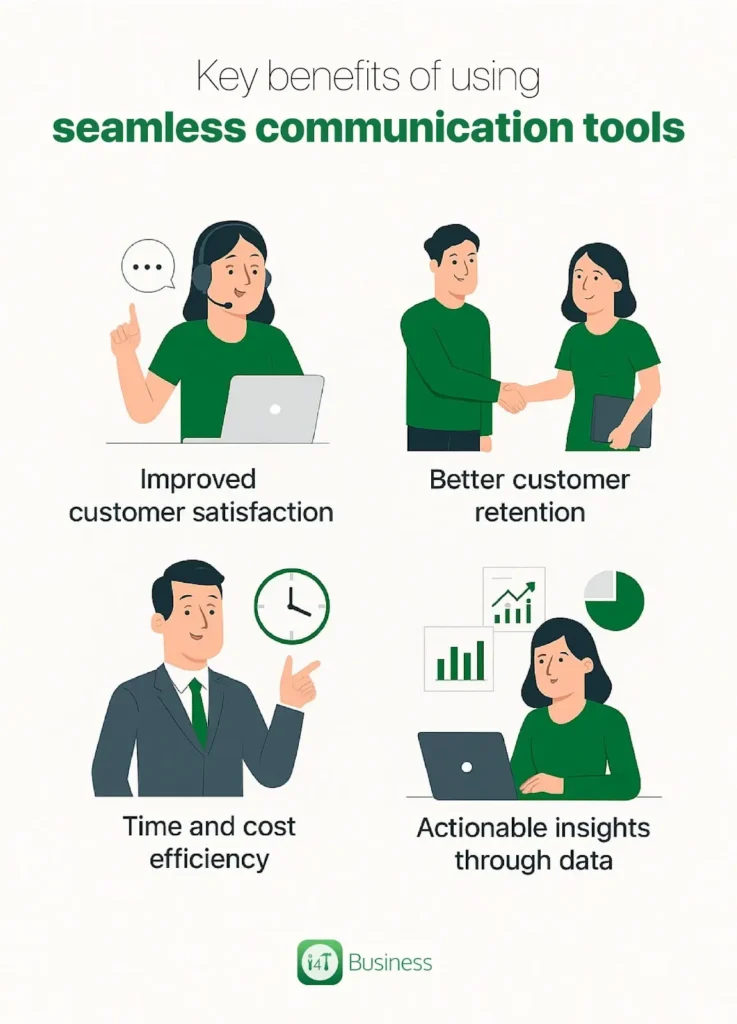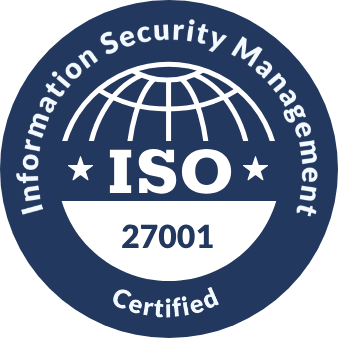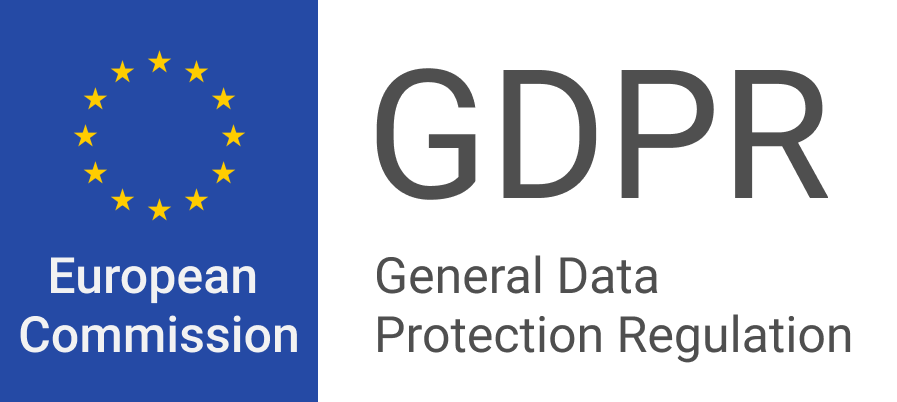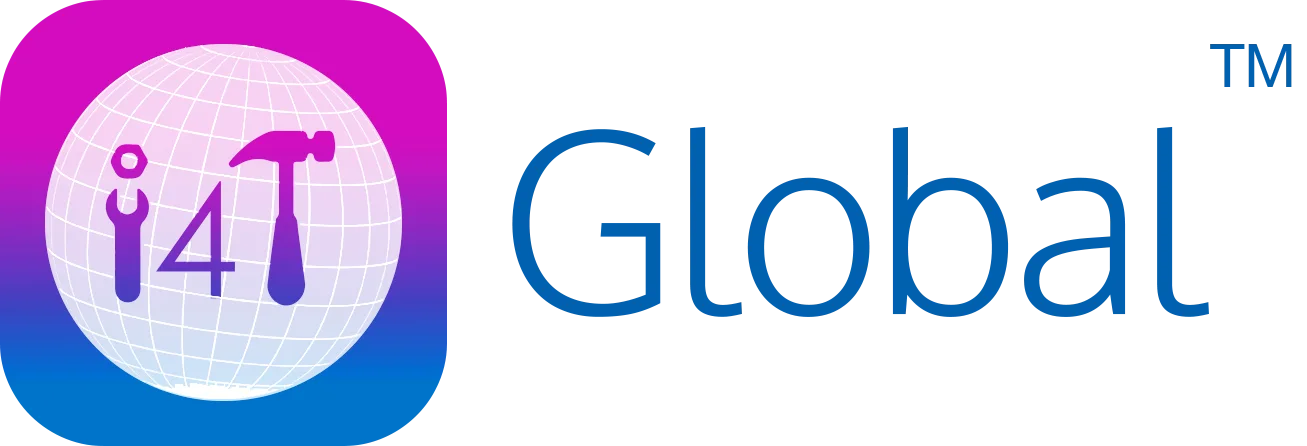Customers are the most important stakeholders in any business, and without them, your business will fail in no time. That’s why building strong relationships with them should be a top priority. At the heart of those relationships lies clear and consistent communication.
The way you connect, respond, and engage with your customers can make or break their experience.
Modern communication tools make it easier than ever to stay in touch, provide instant support, and create a smooth journey for clients from the point of first contact to the final sale. In this article, we will explore how using the right tools can strengthen customer relationships and set you apart.
What are the challenges of customer communication?
Strong communication with customers is essential, but it comes with several challenges. Many field service business owners face daily struggles when it comes to keeping customers in the loop and delivering a smooth experience.
Here are some of the most common communication hurdles you might face and why you should fix them immediately:
- Missed or delayed responses: Customers expect quick answers. But when your team is dealing with jobs and calls, it’s easy to miss a message or delay a reply. In such situations, customers might feel ignored or frustrated.
- Lack of real-time updates: Without live updates, customers are often left wondering, “When will the technician arrive?” or “Is the job done yet?” This lack of transparency can affect the trust they place on your business.
- Too many channels, not enough clarity: Jumping between platforms such as phone calls, texts, emails, WhatsApp can often confuse your team. Further, it can lead to missed information and disorganised workflows.
- No central record of conversations: Things slip through the cracks if a customer contacts you for a job and the details aren’t recorded in one place. This leads to repeat questions, service delays, and unhappy clients.
- Limited access for on-site teams: Technicians in the field often don’t have full access to customer information or past communications, making it hard to answer questions or give accurate updates on the spot.
- Poor internal communication: If your back office and field teams aren’t aligned, the customer feels it. Miscommunication between staff results in delays, double bookings, or wrong job details.
What are seamless communication tools?
Clear, fast, and smooth communication is what customers expect these days, and that’s exactly what seamless communication tools help you deliver. These tools bring all your messages, calls, emails, messages, and even social media chats into one platform, so your team can respond quickly and consistently.
Therefore, you can use this central platform to confirm an appointment, update job status, or follow up after service. You don’t have to jump between applications or dig through inboxes to search for particular information, as everything is stored in a single location in real time.
Types of communication tools for businesses
- Live chat tool: These tools let customers message you directly through your website or mobile application and get quick answers. They’re perfect for handling common questions, booking requests, or support issues without needing a call. Plus, you can set up auto-replies when you’re offline.
- CRM software: A CRM (Customer Relationship Management) system stores all your customer data, from job history to contact information to previous chats. It keeps your team organised and ensures that every customer gets a personalised experience. When your technician or office staff knows the full backstory, they can serve customers better.
- Automated email and SMS tools: Now you can easily set it and forget it. These tools send out appointment confirmations, service reminders, job updates, and even special promotions automatically. It saves time, reduces no-shows, and keeps customers informed without the extra effort.
- Omnichannel communication platforms: These platforms tie everything together phone calls, live chat, emails, and even social media messages into one dashboard. Therefore, you don’t have to check different applications.
How seamless communication tools improve customer relationships?
When it comes to building strong customer relationships, communication plays a key part. However, it’s not just about being available to communicate; it’s also about how well you interact with the clients.
Here’s how seamless communication tools can make a real difference in how your customers see and interact with your business:
Real-time support and instant response
Nobody likes to wait around, especially when something urgent comes up. You can answer customer questions the moment they ask them with live chat and instant messaging. Whether it’s confirming a booking, rescheduling a service, or solving a minor issue, being quick shows that you value their time.
For field service businesses, this speed can be a game-changer. It reduces phone tag, keeps the job moving, and gives customers peace of mind. And when their problems get solved quickly, their satisfaction will go up, and complaints will go down.
Personalisation through CRM and automation
Customers don’t want to feel like just another name on a list. A CRM system helps you remember who they are, what jobs you’ve done for them, and what they care about. So, instead of giving generic responses, you can offer a personalised service like following up on a past job or recommending a new one they might need.
Automation will take this one step further. You can automatically send reminders, promotions, or thank-you messages tailored to each customer with email and SMS tools. It’s personal and professional and requires way less effort from your team.
Multi-channel engagement
Not all customers want to call or text you. Some might prefer email, while others like chatting on social media. Omnichannel communication tools bring all those channels together, so no matter how a customer reaches out, the experience feels smooth and consistent.
This flexibility builds trust as customers feel that they can choose how they want to talk to you. Since all the conversations are synchronised, your team can browse them easily.
Key benefits of using seamless communication tools

These seamless communication tools will help you to work smarter and build stronger relationships with customers that fuel long-term growth. Here’s how these tools can benefit your business in different ways:
Improved customer satisfaction
Fast replies, clear updates, and personalised messages can make a big difference in how customers feel. No one likes being left in the dark, especially when they’re waiting for a service. With seamless tools, your team can respond quicker, stay efficient, and give customers the kind of smooth, stress-free experience they appreciate. When customers feel heard and taken care of, they will stick around with your business for the long term.
Time and cost efficiency
Manually sending appointment reminders, following up on quotes, or chasing feedback can take up a lot of time. With automated communication tools, those tasks get handled for you, saving you hours of work every week.
Therefore, your team can focus more on actual jobs and customer care instead of drowning in administration work. Plus, with fewer missed appointments and better planning, you can cut down on unnecessary costs.
Better customer retention
When customers know they can reach you easily and get quick, helpful replies, they’re far more likely to choose your business in the future too. Strong communication keeps your business at the top of their minds, whether it’s for repeat services, maintenance check-ins, or new bookings.
One of the key goals of any business should be to build a long-term relationship with the clients. CRM tools and automated messages make it easy to check in, request feedback, or offer tailored promotions, all of which will help you to achieve that goal.
Actionable insights through data
Every message, response, and interaction tells a story about the client and their job. Further, the right communication tools let you track things like response times, common customer questions, feedback ratings, and more.
These insights help you spot and improve areas where you are falling short. Therefore, you can deliver a better service to your clients in the future without any previous shortcomings.
How to implement seamless communication tools in your business
Getting started with new communication tools doesn’t have to be complicated. With the right plan and approach, you can roll these tools out to improve your business and connect with customers without disrupting your day-to-day operations. Here’s how to implement them step by step:
Evaluate your communication needs
Before jumping into new tools, take a moment to look at your current setup. Ask yourself:
- Are you struggling with missed calls or slow replies?
- Do you need better tracking of customer conversations?
- Would real-time updates or automated messages make life easier?
Also, think about what your customers prefer because some may like texting while others prefer email or live chat. Knowing how they want to connect helps you choose tools that benefit your business.
Choose the right tools
Once you’ve mapped out your needs, it’s time to pick the tools that match. Look for options that:
- Offer the features you need (e.g., automation, multi-channel support, mobile access)
- Integrate smoothly with your existing systems (like scheduling or invoicing software)
- Can grow with your business over time
Tip: Start with a trial or demo to test the waters before fully committing to a solution.
Train your team
The best tools are only as good as the people using them. Therefore, make sure your team is trained to:
- Use each feature properly
- Know how to respond quickly and consistently across all channels
- Access and update customer information through the CRM
You should also ensure that there’s a smooth workflow between your sales, support, and marketing teams so everyone stays on the same page. This avoids double-handling and keeps communication professional across the board.
Final thoughts: Enhancing customer relationships for long-term success
At the end of the day, strong communication is what keeps customers coming back.
Whether it’s sending a quick update or replying to a service request, how you communicate says a lot about your business.
That’s why you should use modern, seamless communication tools that will help you to stay responsive, organised, and professional without adding more to your plate.
Therefore, you can deliver better service and maintain better interactions with clients. When satisfied and feel taken care of, they’re more likely to stick around, leave great reviews, and recommend you to others.
So, if you’re looking to step up your game, now’s the time to invest in tools that help your team communicate better and work smarter. i4T Business gives field service companies the tools to communicate faster, more clearly, and easily. From real-time job updates to automated messages and easy CRM access, it’s all built to keep your customers happy and your team on track.
Book a free i4T Business demo and see how our software can help you boost customer satisfaction, improve team coordination, and grow your business, all at the same time.
FAQs
It means all messages, updates, and interactions happen in real time and are synchronised across channels without delays or confusion.
Yes, they allow faster responses and better tracking, so issues are resolved quickly and professionally.
You can set up auto-replies or chatbots to keep communication going even when you’re offline.
.
Yes, automated reminders and confirmations keep customers informed. Hence, it is less likely to miss appointments.
Not at all. Small and mid-sized businesses benefit even more from the time saved and improved customer satisfaction.
Hot off the press!

Field Service Management sector operates, the i4TGlobal Team loves to share industry insights to help streamline your business processes and generate new leads. We are driven by innovation and are passionate about delivering solutions that are transparent, compliant, efficient and safe for all stakeholders and across all touch points.










